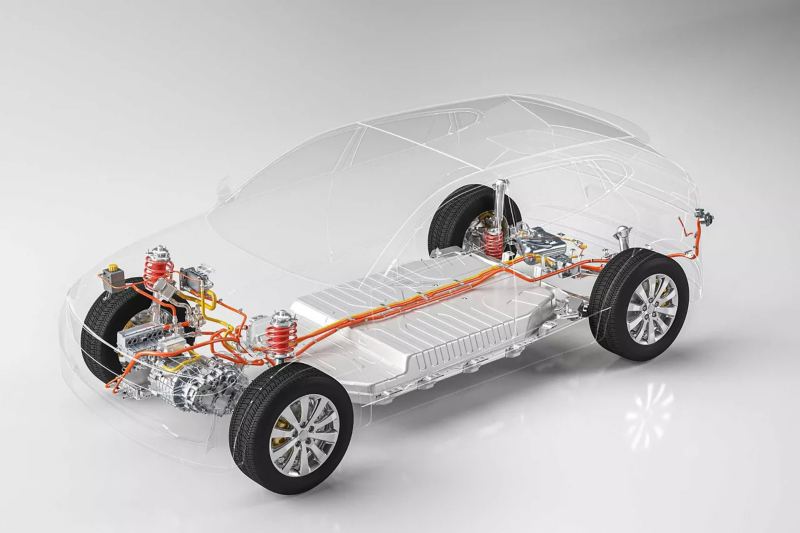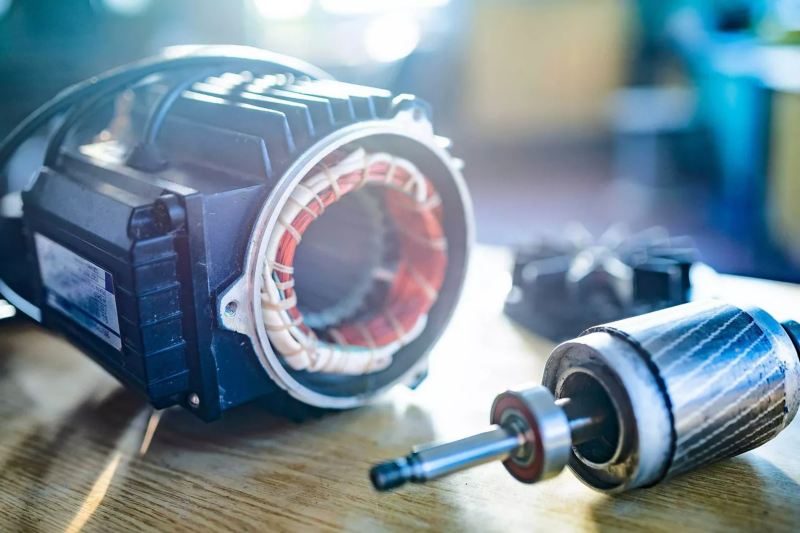Drive technology in electric cars: where electric motors still have potential
When it comes to the further development of electric cars, the focus tends to be on the battery. But what about the drive of the vehicle? We explain how the electric motor works and what could make it even more powerful in the future.
When it comes to the further development of electric cars, the focus tends to be on the battery. But what about the drive of the vehicle? We explain how the electric motor works and what could make it even more powerful in the future.
Electrically powered vehicles …
- … usually have only a single gear.
- … have so far required a reduction gear.
- … could achieve a greater range in the future with improved cooling technology.
How does the motor in an electric car work?
Electric cars are powered by electricity, which is generally stored in lithium-ion batteries. Specially-built power electronics establish the connection between the motor and the battery. Electrical energy is then converted into mechanical energy. This is done by using a fixed stator and a movable rotor, which is set in motion in different ways, depending on the vehicle.
Anyone driving a Volkswagen ID.3 does so with the help of what is known as a permanently excited synchronous motor (PSM). The current in the motor flows through the copper wire coils of the stator, generating a circulating magnetic field. The rotor, which is made of rare earth elements, such as neodymium, has a permanent magnetic field itself. This forces it to synchronously follow the fields of the stator and rotate. The situation is different for cars with flux switching motors (FSM). In these electric vehicles, the rotor doesn't have a permanent magnetic field, but it is generated for a limited time by an electromagnet.

Electric cars: one gear is enough
The full torque of an electrically powered vehicle is immediately available as soon as the driver hits the accelerator pedal. And it delivers this performance over an impressively wide speed range. This usually obviates the need for manual transmissions in electric cars, unless you require your car to have both extreme acceleration and also a very high top speed. Then, two gears are totally appropriate for the vehicle. By contrast, electric cars don't need a reverse gear – electric motors run in both directions.
On the other hand, a reduction gear is more common in electric cars. Electric motors only achieve their highest level of efficiency at a certain speed and operate at several thousand revolutions per minute. During this period, however, the wheels are usually only rotating 2,500 times at most. Help comes in the form of a reduction gear, which reduces the speed of the motor by the required factor.
The advantages of electric motors
All-electric cars don't just stand out because of the excellent driving performance they offer over a wide range of speeds – their electric motors operate almost silently. They produce virtually no vibrations and consist of fewer parts than combustion engines, which means that they are smaller despite producing the same power. Their relatively simple construction makes them low-wear. And electric cars become electricity generators by recuperation, i.e. energy generation when braking and driving downhill. Further reasons for electric mobility need to be considered in the overall picture.
More efficient than combustion engines
The efficiency of electric motors is around 90 percent, while the combustion engines of modern cars have an efficiency of around 45 percent. The figure can be as high as 95 percent in some cases. Unlike in the production of petrol or diesel, a lot of primary energy gets lost in the generation of electricity for electric vehicles in coal, gas, or nuclear power plants. It is therefore much better to use renewable energy for electric vehicles.
No CO2 emissions
Electric mobility is 'locally' CO2-free. This means that the vehicles don't generate any additional CO2 emissions while they are being driven. They rack up an even better environmental score if they are charged with green electricity.
What does the future of the electric motor look like?
Manufacturers of electric cars attach great importance to the further development of batteries. But there is also scope for improving the vehicles' drive.

Volkswagen is already using what's known as hairpin technology in the motor of its ID.3. In this production process, the copper wire coils of the stator are made of flat-shaped coils, reminiscent of hairpins. They ensure optimum use of the available space. Compared to wound coils, the additional copper wire gives the hairpins an edge in terms of power and torque.
From wind turbines to electric cars
Of course, research is already underway to improve the efficiency of the electric vehicle drive system, among others by the American start-up Linear Labs. The Texan company wanted to develop a linear generator for the shaft of a wind turbine, to generate electricity at low speed and high torque. They reversed this principle and applied it to electric mobility. The motor in the car works particularly efficiently if its speed range is as close as possible to wheel speed. The Hunstable Electric Turbine (HET) is designed to guarantee this. If it delivers the required torque at less than 3,000 rpm, a heavy reduction gear would also be superfluous in the vehicle. This would enable the manufacturer to achieve a range of up to 20 percent more in the car.
Cooling from inside
In electric mobility, dynamic E flow takes a different approach to optimising. The German company relies on hollow wire coils in electric car motors. They no longer have to be cooled externally – the coolant flows directly through the inside of the coils. This obviates the need for separate cooling equipment and, according to the manufacturer, is up to 1,000 times more efficient. In addition, up to five times the amount of current can flow through the motor compared to today's electric car motors. And as any heat produced is completely dissipated, this increases the life of components, such as insulation or magnets.
The best way to see how powerful the latest Volkswagen electric car motors are is to test drive a model from the ID. family.